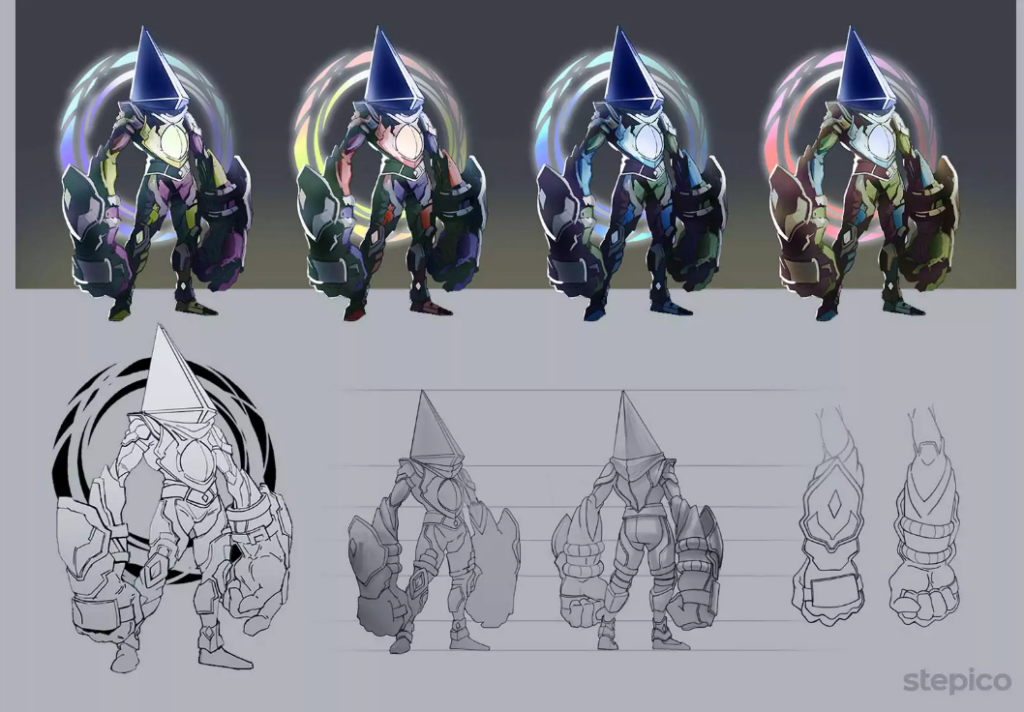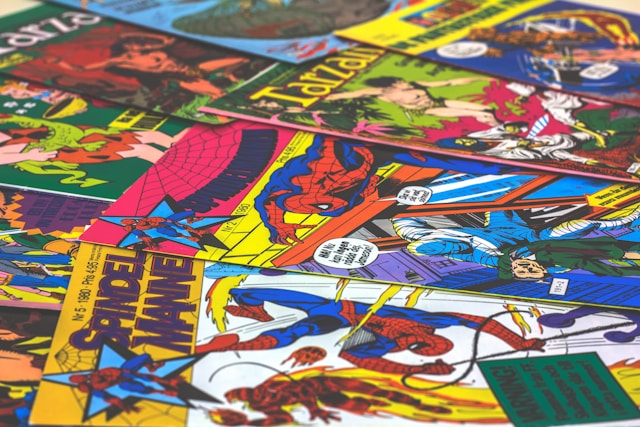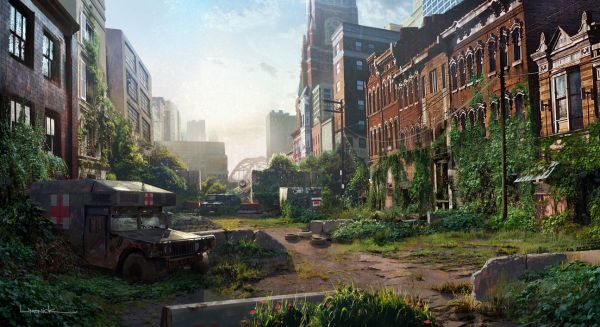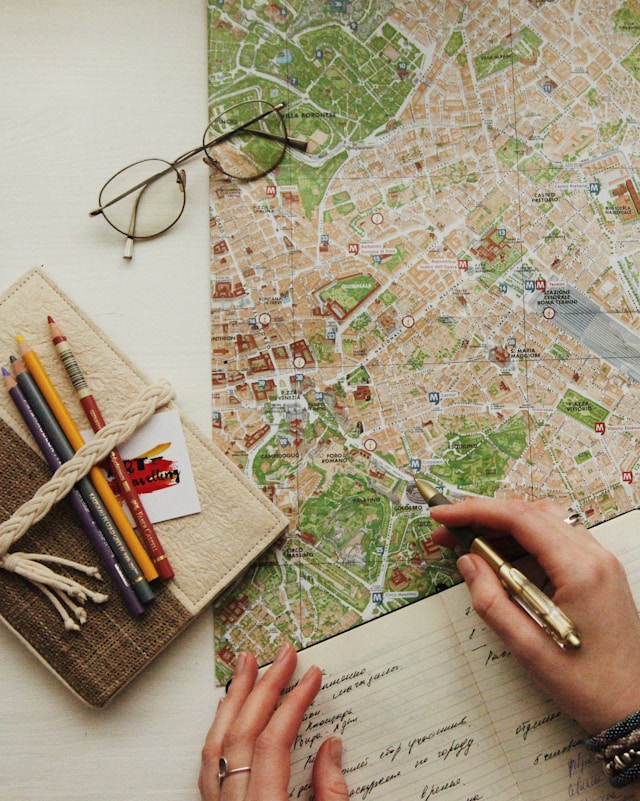Without concept art, video games wouldn’t be as playable or fun as we know them to be. They ground a game’s design and development process in a tangible reality, providing designers/developers with invaluable guidance.
For that reason, we’ll discuss video game concept art in today’s guide. You’ll not only learn what concept art is but also how you can create your own compelling visuals.

What Is Concept Art?
As you can imagine, every game idea you’ll ever have will start with a brainstorming session. In these sessions, you’ll discuss potential concepts and come up with helpful descriptions for your game.
Concept art acts as the visual representation of those ideas, concepts, and descriptions. It is the perfect means of establishing your game’s look, feel, and overarching style early in the creative process.
With concept art, you can create and maintain an engaging visual consistency throughout your game’s most crucial elements. Think character, environment, object, HUD, scene, and vehicle design; concept artists will bring all of these elements to life.
What’s more, the work that concept artists do doesn’t just bridge the gap between game art and game design. It also simplifies the game development process.
Game developers will leverage concept art to ensure their vision aligns with that of the rest of the team. With this cross-functional unity, developers can combine playability with cohesive, immersive visual designs, which contributes significantly to user engagement.
Ultimately, concept art is the first stage of the game design process. For that reason, it is also your first opportunity to build exceptional player experiences.

How To Draw Video Game Concept Art: 5 Key Techniques
Bringing an immersive world to life is no easy task. Fortunately, there are many techniques that will help you do so effectively.
If you want to learn how to draw video game concept art, you’ll need to know these techniques. To help you, we’ve discussed these artistic methods below.
- Silhouettes: Silhouettes lack intricate detail, but they’ll allow you to create sharp outlines of your game’s characters, objects, and vehicles. Treat your silhouettes as wireframes; they provide a basic structure that will allow you to visualize the elements within them.
- Thumbnails: Thumbnails are quick, rough sketches that can easily whip up with a pencil and paper. They don’t contain lots of meticulous details, but they facilitate artistic exploration, especially when it comes to composition and perspective.
- Iterations: Iterative drawing simply means creating multiple different versions of the same concept. For instance, a concept artist may draw different versions of a character’s hairstyle or a sword’s hilt.
- Line Art: Many concept artists will use line art to add the finer details to their thumbnails. Line art techniques are especially handy when an artist needs to visualize the unique gestures and movements of particular characters.
- Photobashing: Photobashing involves blending together photos and 3D assets to create hyper-realistic visual concepts. It requires an understanding of digital art, composition, lighting, and color theory.
How To Create Concept Art for Video Games
Let’s really get into concept art; below, you’ll learn how to create concept art for video games like a pro.

1. Preparing Your Designs
Concept artists don’t start producing artwork without knowing their project’s design brief inside and out.
So, while you review your brief, take note of your game’s style, story, levels, and characters. All of these elements will shape the look and feel of your designs, as well as its style.
Speaking of style, this is another crucial facet of your designs that you must determine before you get to work. Consider asking yourself the following questions:
- Should I create abstract concept art, utilizing lines, shapes, and colors to emphasize themes and emotions?
- Should I focus on stylized concept art to convey an exaggerated, comic book/cartoon-like aesthetic?
- Should I prioritize a realistic art style that clarifies the intricate details within my subject?
2. Conducting Research
After defining your design’s direction, you should conduct user research. Your knowledge of your players’ desires, needs, preferences, and expectations of your game’s genre will make your designs more engaging.
You should also research your game’s theme and genre. For instance, if you were creating a cyberpunk game, you should learn about technology, societal decay, and cyberpunk color palettes. Through your research, you’ll end up producing deliverables that align with your players’ expectations and design brief.
Tip: Assemble mood boards containing images, textures, architecture, fashion, and color palettes that reflect your research findings and game setting.

3. Drawing Your Initial Sketches
Now, you’re ready to start drawing your silhouettes, thumbnails, and iterations. At this stage, experimentation is your priority, not excessive amounts of detail.
Use this time to explore the different ways you can manipulate lines, shapes, colors, and textures in your artwork. By the end of this stage, you’ll have several iterations that will have varying emotional impacts on your players.
4. Refining Your Best Idea
You’ll need to evaluate your sketches and identify which one adheres the most to your brief and research. You should also consider which iteration is the most memorable and appealing.
Whichever iteration you pick will be the one you’ll bring to life with refinement and meticulous detail. To do this effectively, you’ll need to contextualize your designs within the game’s narrative.
Let’s say you were creating a forest environment in a fantasy game. In this case, you’d contextualize your environment with things like talking trees, large spiders, and dragon bones.
After you add contextual details, you can add intricate textures, colors, lighting, shadows, and atmospheric effects like the weather.
Most importantly, you should consider how every visual element you create contributes to the overall mood of your work. Think about how you want your players to feel as they encounter your environments, characters, and props.
Tip: Create your design from multiple different angles and perspectives to help developers integrate your artwork into the game’s engine.

5. Presenting Your Art
The last thing you need to do is present your designs to other members of your design team.
By showing your art to fellow artists, game designers, and game developers, you’ll acquire valuable, innovative insights. These insights will allow you to combine functionality with aesthetics, exposing areas of improvement.
After making these improvements, you’ll have a collection of compelling video game concept art!
The Best Video Game Concept Art Books
If you want to create the best video game concept art, you’ll need to use the best educational resources. That’s why you’ll find our top picks for the best video game concept art books below.
- Designing Creatures and Characters: How to Build an Artist’s Portfolio for Video Games, Film, Animation and More by Marc Holmes.
- Drawing Basics and Video Game Art: Classic to Cutting-Edge Art Techniques for Winning Video Game Design by Chris Solarski.
- The Art of Videogames: 10 (New Directions in Aesthetics) by Grant Tavinor.
- WORLDBUILDING: Gaming and Art in the Digital Age by Aïcha Mehrez.
- Videogames and Art by Grethe Mitchell and Andy Clarke.
FAQs
What is concept art in video games?
With video games, concept art is all about bringing a game’s visual elements and style to life. Because of this, a concept artist’s designs will serve as the foundation of the video game development process.
What degree do you need to become a video game concept artist?
Every concept artist would benefit from having a degree in game art, graphic design, game design, or computer science.
What does concept art for video games entail?
Video game concept art encompasses the design of a game’s characters, environments, color schemes, HUDs, interactive elements, and objects.
Your Video Game Concept Art: Create Top Designs With Page Flows
Your concept art will determine the mood of your entire game and serve as the bedrock of your players’ experiences. Therefore, it’s a good idea to learn how your players navigate games and other digital products.
To learn their behaviors is to anticipate them, allowing you to create your designs with intuitive in-game navigation in mind. For this, you’ll need reliable user flow inspiration. In other words, you’ll need Page Flows.
We offer a vast curation of recordings and screenshots that document exceptional user flows from dozens of user-centric brands. We collect all of the valuable flows you could ever take inspiration from, including onboarding and reviewing.
What’s more, our resources span a diverse range of popular industries and products. For instance, as a budding concept artist, you’d especially benefit from our Monument Valley and Candy Crush flows.
Your video game concept art is the foundation of your game design projects. Page Flows is the foundation of inspirational, high-quality user flows. Check out Page Flows now to combine the two and take your designs to the next level!





